
This 'cursed' diamond has allegedly brought misfortune to all its owners
The Curse of the Hope Diamond
Indeed, the curse of the Hope Diamond has been associated with many high-profile catastrophes throughout its history. It involves everything from the cruel fate of Marie Antoinette to the ruin of American socialite Evalyn Walsh Mclean.

But did a simple gemstone really lead to executions, torture, and violent deaths? Or were these just rumors to sell newspapers and generate excitement around the stone?
Separating fact from fiction
From its mythical beginnings in an Indian mine to its current display at the Smithsonian National Museum of Natural History, the Hope Diamond certainly has a long and fascinating past. But which parts of the story are actually true?

Well, there is a lot to tell in this story, so buckle up. We will try to separate facts from fiction as we retell this incredible narrative.
Origins of the Hope Diamond
The history of the Hope Diamond technically dates back more than a billion years. We must think of a time when carbon atoms bonded deep beneath the Earth's surface.

Combined with traces of boron, this chemical process eventually led to a radiant blue diamond. And eventually, the treasure was unearthed by miners in 17th-century India.
Andhra Pradesh
Although much of the diamond's history is based on rumors and speculation, it is believed to have been discovered in the Kollur mine. This is located in a state now known as Andhra Pradesh. At that time, the diamond was much larger than the stone currently displayed at the Smithsonian.

According to legend, the diamond eventually found its way into a Hindu temple, where it was used to depict the eye of a stone-carved deity.
Jean-Baptiste Tavernier
However, such a valuable jewel must have been too tempting for some observers. One day, a French gem merchant named Jean-Baptiste Tavernier allegedly snatched the diamond from the idol and fled.

To seek revenge for this unforgivable act, the temple priests are said to have devised a curse. They cursed anyone who might one day claim the stolen stone for themselves.
Paris
In terms of exciting plotlines, this ranks up there with classics like Indiana Jones or The Mummy. However, there is no evidence that the diamond was ever in a temple, let alone stolen by a rogue merchant.

In fact, most experts believe that Tavernier simply purchased the stone in India and eventually brought it back to Paris. That is definitely less thrilling.
Louis XIV
According to historical records, the diamond likely arrived in Europe sometime between 1640 and 1667. It was then known as the Tavernier Blue and weighed an impressive 115 carats. One doesn't have to be a diamond expert to know that's insane!

Shortly after its arrival in Europe, the diamond was acquired by Louis XIV. Known as the Sun King, he reigned over France for more than 70 years. Not many monarchs last that long!
The Blue Diamond of the French Crown
Under Louis' leadership, the stone was recut and given a new name, the Blue Diamond of the French Crown or the French Blue. For generations, the jewel remained in the royal family and was eventually transformed into a pendant by order of Louis XV.

A tremendous change swept over France in the form of the French Revolution, which arrived in May 1789. At that time, the piece was just one of many treasures owned by Louis XVI and his wife Marie Antoinette.
Misfortune and Destruction
Most of us are aware of the bloody fate that would befall Marie and her husband. Both were killed by the revolutionaries and sent to the guillotine for treason.

Over the years, many have attributed the brutal execution of the royal couple to the alleged curse of the French Blue. But does the diamond truly bring misfortune and destruction to all its owners?
The French Revolution
When the French Revolution turned Marie and Louis' court upside down, thieves made off with most of the crown jewels, including the French Blue. And the diamond would never be seen again - at least not in the form its previous owners knew it.

For decades, the whereabouts of the diamond remained unknown, although there are various theories about it. One theory suggests that it may have eventually come into the possession of George IV of Britain.
Thomas Hope
Eventually, the French Blue resurfaced as a smaller, 45-carat diamond in the collection of Thomas Hope, a wealthy banker from London. By this time, it had lost all traces of its former grandeur and formed the centerpiece of a comparatively plain medallion.

After the death of its owner, the diamond passed to his brother Henry. He occasionally lent the piece to his sister-in-law to wear at important social occasions.
Simon Frankel
For more than 60 years, the stone remained in the same family, earning it the name we still use today - the Hope Diamond. But at the beginning of the 20th century, financial difficulties forced the descendants of Thomas to sell the jewel.

And in 1901, it was purchased by dealer Simon Frankel for a sum that some believe to be as high as $250,000. While that may sound like an astonishing bargain, this amount is equivalent to $8.8 million today.
Rumors of a Dark Curse
Even diamond dealers are not immune to financial uncertainty, despite the ironically lucrative business they are in. So Frankel had to sell the stone himself in 1908. But don't feel too bad for him - he made a tidy profit.

According to some reports, the diamond was purchased from Frankel by a man named Selim or Solomon Habib. He was said to represent Abdul Hamid, the Sultan of the Ottoman Empire.
In the Hands of a Famous Jeweler
As the Ottoman Empire began to decline, the story goes, the jewel was sold once again. Eventually, it ended up in the hands of Pierre Cartier, the renowned French jeweler. But by this time, the Hope Diamond had become much more than just a beautiful piece of jewelry.

By this time, rumors had been circulating for many years about a dark curse surrounding the diamond. People blamed the stone for all sorts of misfortunes.
Unpleasant Incidents
As early as 1888, articles had been published in the press attributing a number of fictional legends to the impressive jewel. And by the beginning of the 20th century, the curse of the Hope Diamond was a myth that many people had heard of.

People associated the stone with numerous deaths and unpleasant incidents over the past 200 years. But how much of it was true and how much was fabricated to sell newspapers and pique the interest of potential buyers?
A Cruel Fate
According to some, the curse dates back to the early days of the diamond when Tavernier dared to steal it from an Indian temple. It is said that he met a cruel fate, being torn apart by wild dogs.

But there is no evidence to support these claims. In fact, it is believed that Tavernier died in 1689 after living a long and prosperous life.
The Sun King
Similarly, the diamond has been associated with many alleged misfortunes of its former owner, Louis XIV, such as his inability to father a surviving heir. However, others point out that in 17th century France, it was unfortunately not uncommon to lose children in infancy.

And furthermore, the Sun King himself enjoyed the longest reign of any monarch who ever lived. That is hardly an example of misfortune, is it?
Nicholas Fouquet
Rumors of a curse, however, are not so easily dismissed when it comes to the case of Nicolas Fouquet, one of Louis XIV's advisors. According to legend, the former favorite of the royal court borrowed the Hope Diamond - only to quickly fall out of favor with the king.

Fouquet was suspected of embezzling state finances and otherwise acting against the king's interests. Ultimately, he was imprisoned for almost 20 years and may have been the original man in the iron mask.
Marie Antoinette
Likewise, there is no doubt that Marie Antoinette and Louis XIV experienced a string of bad luck after acquiring the diamond. And an even worse fate befell the queen's friend, Princess de Lamballe, who is said to have borrowed the cursed jewel.

The princess was murdered by an angry mob at the height of the French Revolution. Even in death, she was not granted peace. Her head was impaled on a spike.
Wilhelm Fals
No one really knows exactly what happened to the diamond between the French Revolution and its reappearance in 19th century England. But the alleged curse seems to have remained intact during this time.

According to legend, Wilhelm Fals - the Dutch jeweler who recut the gem into its current form - was its next victim. He is said to have died in a particularly gruesome manner.
Francois Beaulieu
Apparently, Fals was murdered by his own son, Henrik. But why would Henrik do something so terrible? He reportedly coveted the invaluable jewel and wanted it for himself. But the story doesn't end with the son killing the father - it only gets darker from there.

Upon realizing what he had done, Henrik was overwhelmed with grief and decided to take his own life. After that, the story goes, the diamond passed into the possession of Francois Beaulieu, who sold it for a large sum - only to allegedly die of starvation.
Financial Ruin
The next victims in the history of the curse are naturally the Hope family. Although they remained wealthy for several decades after acquiring the diamond, they eventually fell into financial ruin.

It seems that Frankel, the next owner of the supposedly cursed gem, suffered the same fate. It's easy to understand why talk of a curse surrounding this object has captured so much attention over the years!
The legend solidifies
Many people have pointed to a more tangible reason for the financial difficulties of Frankel and the Hopes. Namely, the economic crisis of 1907. That seems like a more reasonable explanation than a supernatural curse.

However, by this time, the legend had already taken firm hold in the public's imagination. And in 1908, an article titled "Hope Diamond Has Brought Trouble To All Who Have Owned It" appeared in The Washington Post.
A long line of tragedies
The following year, the British newspaper, The Times, followed suit and published an article about the alleged curse. The article, published on June 25, 1909, read, "[The ownership of the diamond] is the story of a long series of tragedies - murder, suicide, madness, and various other misfortunes."

Then, in 1911, a similar story appeared on the other side of the pond in the pages of The New York Times. Apparently, nothing stood in the way of the spread of this bizarre myth.
Jacques Colet
At this time, even more people were added to the growing list of alleged victims. According to The New York Times, the next person to come into possession of the cursed jewel was Jacques Colet, who purchased the diamond from Frankel.

But instead of celebrating his new treasure, reports claim that he promptly took his own life. This only added more fuel to the fire when it came to how seriously people took the idea of the curse.
Ivan Kanitovski
The next owner, according to legend, was Ivan Kanitovski, a Russian prince who purchased the diamond from Colet. Apparently, he was murdered by revolutionaries, but not before he loaned the jewel.

That person was Lorens Ladue, an actress who was murdered on stage. And after that, a Greek merchant named Simon Montharides came into possession of the stone.
Selim Habib
But Montharides, it seems, was no luckier than any of the many previous owners of the gem. According to legend, he died when the horse he was riding threw him, his wife, and their young child off a cliff.
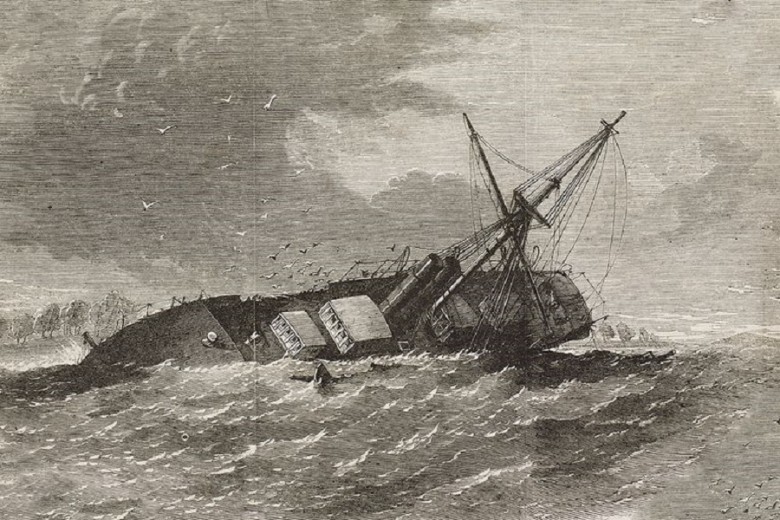
After another owner was disposed of, the story goes, the diamond passed into the hands of Selim or Salomon Habib, the representative of Sultan Abdulhamid. Guess what? He also died tragically, allegedly drowning when a French steamer sank off the coast of Singapore.
A good story
A lack of evidence has never stood in the way of a good story, of course. And over the years, several servants of Abdulhamid have been linked to both the diamond and the curse. Concrete proof of these stories may be hard to come by, but they are interesting to read.
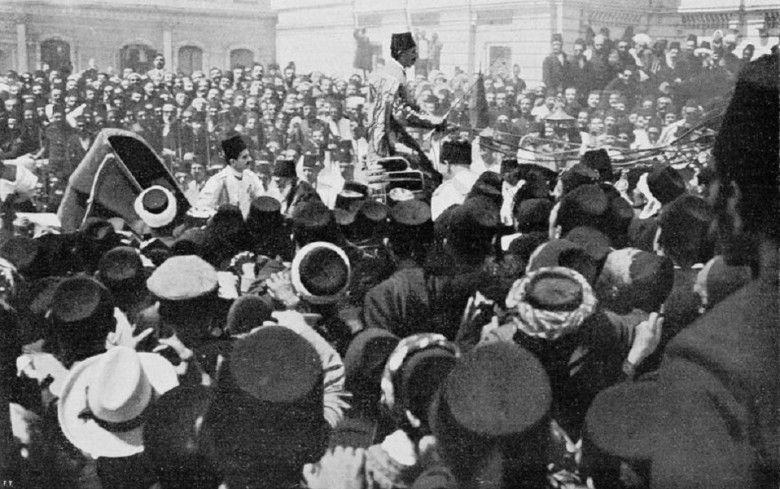
Take, for example, a person named Abu Sabir. This individual was allegedly tasked with polishing the gem - only to eventually be captured and tortured.
Further victims of the curse
Similarly, Kulub Bey, who may have guarded the stone when it belonged to Abdulhamid, is said to have been attacked by a violent mob. And when Jehver Agha, a member of the Turkish revolutionary forces, attempted to steal the diamond, he is said to have met a violent death.

After that, however, the curse seems to have remained quiet for several months. That's a nice respite after so much misfortune and death.
Later embellishments
In fact, neither Simon Rosenau, who owned the diamond after Abdulhamid, nor the man he sold it to, Pierre Cartier, seem to have experienced any negative impact at all! What a wonder! But that didn't stop the latter from using the myth surrounding the stone to generate a lot of publicity.

In fact, many believe that he personally embellished the legend of the curse to increase the allure of the gem. It's amazing what a good story can do!
Evalyn Walsh McLean
In 1910, Cartier presented the diamond to Evalyn Walsh McLean, the wife of Washington Post owner Edward Beale McLean and the daughter of a mining tycoon. Not many people in the world realistically could afford such a stone, but she was one of the few who could!
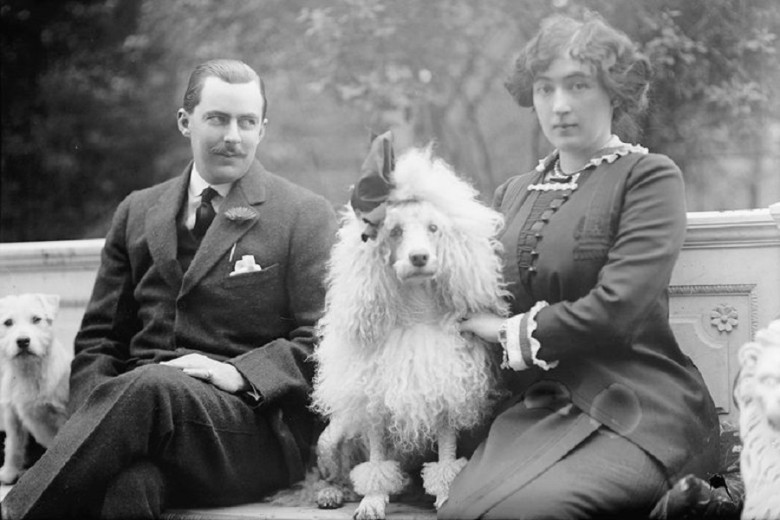
But despite Cartier's clever, albeit dubious, sales pitch, McLean initially showed no interest. But then, he had the stone remodeled in a style that better suited the time - and the heiress agreed to the purchase.
Tragic events
If McLean knew about the curse, she showed no signs of concern. She even hung the jewel around the neck of her household dog, Mike, risking passing the curse onto the unsuspecting animal. Eventually, fate caught up with the woman herself.

After the tragic death of her young son, Edward left her and took another woman by his side. Then, in 1946, her daughter Evie died at the age of 25.
Mounting debts
With mounting debts, Evalyn was forced to sell her share of the Washington Post. When she died in 1947, the Hope Diamond passed on to her grandchildren, although it was held in trust until they turned 25.

But by 1949, money was scarce, and the gem was sold to raise funds for the estate. Would the diamond wreak havoc on a new owner once again?
Noble gesture
Although Evalyn was not the last owner of the Hope Diamond, she seems to have been the last victim of the alleged curse. In 1949, the jewel was purchased by Harry Winston, a jeweler who took it on a tour across the United States.

And in 1958, he sent it by mail to the National Museum of Natural History for exhibition, where it remains to this day. Apparently, this gesture put an end to the curse on the famous gem.
Coincidence or more?
From Marie Antoinette and Louis XVI to Fals, Frankel, Montharides, and the others, it seems that misfortune has followed the unlucky owners of the Hope Diamond. But are there any truths to rumors of a curse?
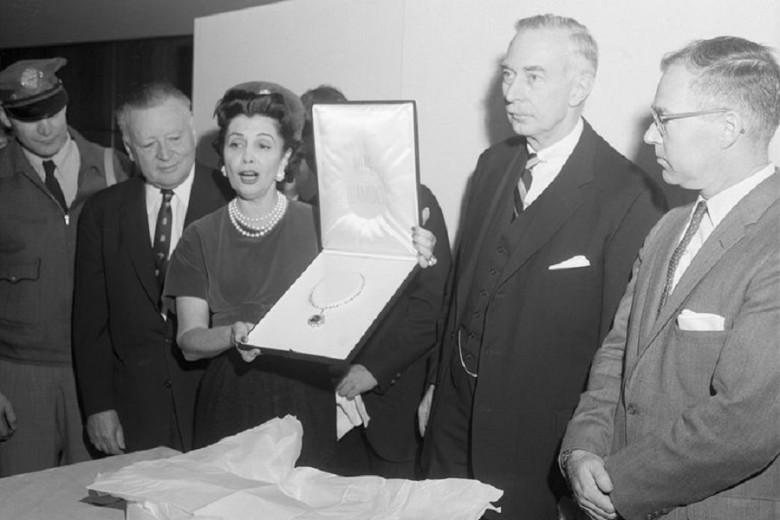
While some find it hard to view the long list of incidents associated with the gem as mere coincidence, others are less convinced.
Logical explanations
As some commentators have noted, almost everyone experiences something tragic at some point in their lives. Therefore, it wouldn't be difficult for a resourceful journalist to flip through a list of previous owners and highlight unfortunate incidents.

Since the curse of the Hope Diamond involves misfortunes like financial difficulties and failed marriages, it's not hard to see how the legend originated. People like to look for external forces to attribute their unhappy circumstances to!
Products of Imagination
One of the most compelling arguments that refutes the curse story is perhaps the suggestion that some of its victims may have never even existed! In fact, there seems to be little evidence that Fals, Beaulieu, Kanitovski, Ladue, or Montharides were anything other than products of the imagination.

Many of the real individuals associated with the curse were also victims of false rumors and superstition. The story of Habib's drowning, for example, originated from a case of mistaken identity.
Coincidence or more?
From Marie Antoinette and Louis XVI to Fals, Frankel, Montharides, and the others, it seems that misfortune has followed the unlucky owners of the Hope Diamond. But are there any truths to rumors of a curse?

While some find it hard to view the long list of incidents associated with the gem as mere coincidence, others are less convinced.
Logical Explanations
As some commentators have noted, almost everyone experiences something tragic at some point in their lives. Therefore, it wouldn't be difficult for a resourceful journalist to flip through a list of previous owners and highlight unfortunate incidents.
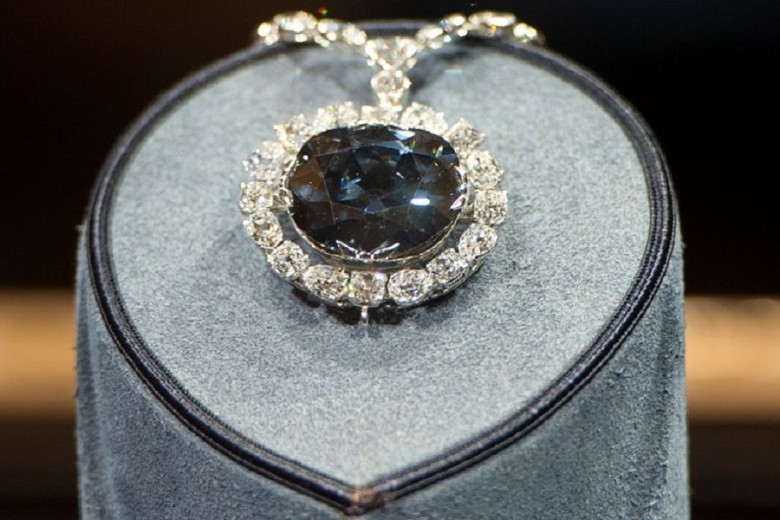
Since the curse of the Hope Diamond involves misfortunes like financial difficulties and failed marriages, it's not hard to see how the legend originated. People like to look for external forces to attribute their unhappy circumstances to!
Products of Imagination
One of the most compelling arguments that refutes the curse story is perhaps the suggestion that some of its victims may have never even existed! In fact, there seems to be little evidence that Fals, Beaulieu, Kanitovski, Ladue, or Montharides were anything other than products of the imagination.

Many of the real individuals associated with the curse were also victims of false rumors and superstition. The story of Habib's drowning, for example, originated from a case of mistaken identity.
Superstitions around diamonds
But if the evidence for a curse is so dubious, then why has it endured for over 100 years? According to some experts, the idea that certain gemstones attract misfortune is deeply embedded in our society. In her 1979 book, "The Giant Book of Superstitions," Claudia de Lys further explained this concept.

The author stated, "A long history of bloodshed, theft, intrigue, loss of empires, loss of life, and other catastrophes belongs to each of the most famous diamonds, and most of the stories are historically true. This fact only reinforces the belief in the minds of the superstitious that large diamonds are the cause of their owners' misfortune."




















Comments
0 comment